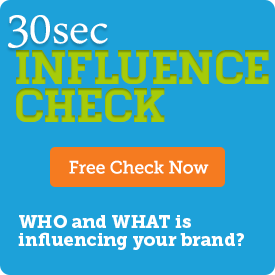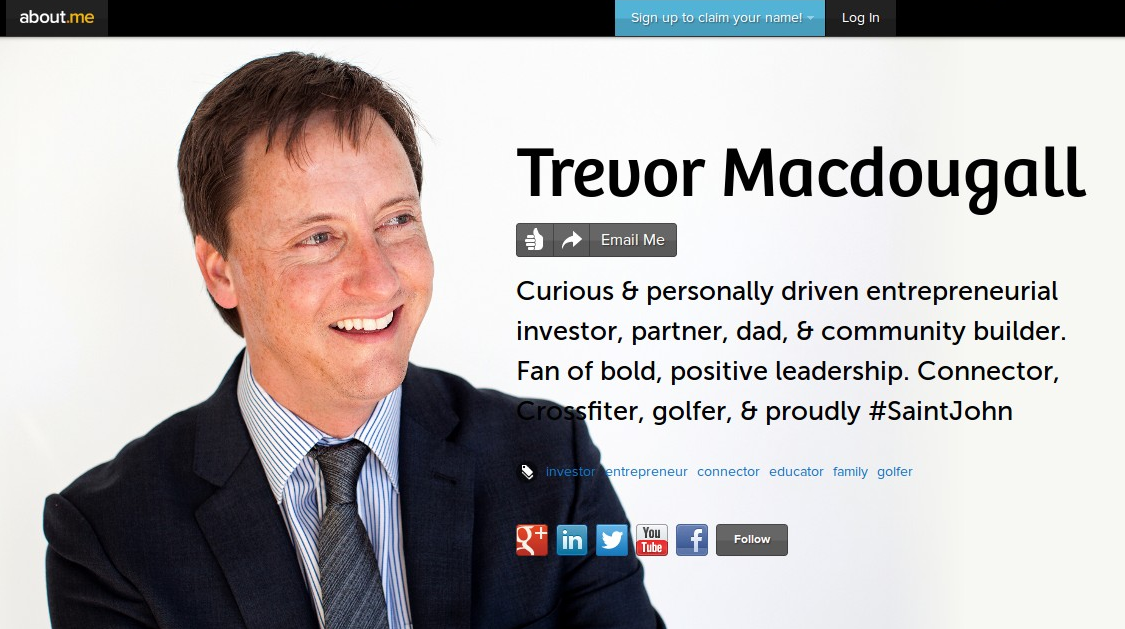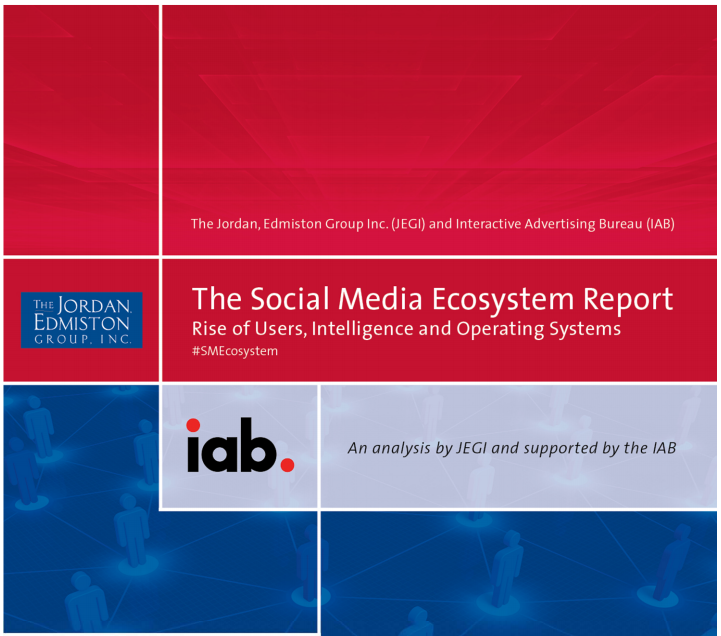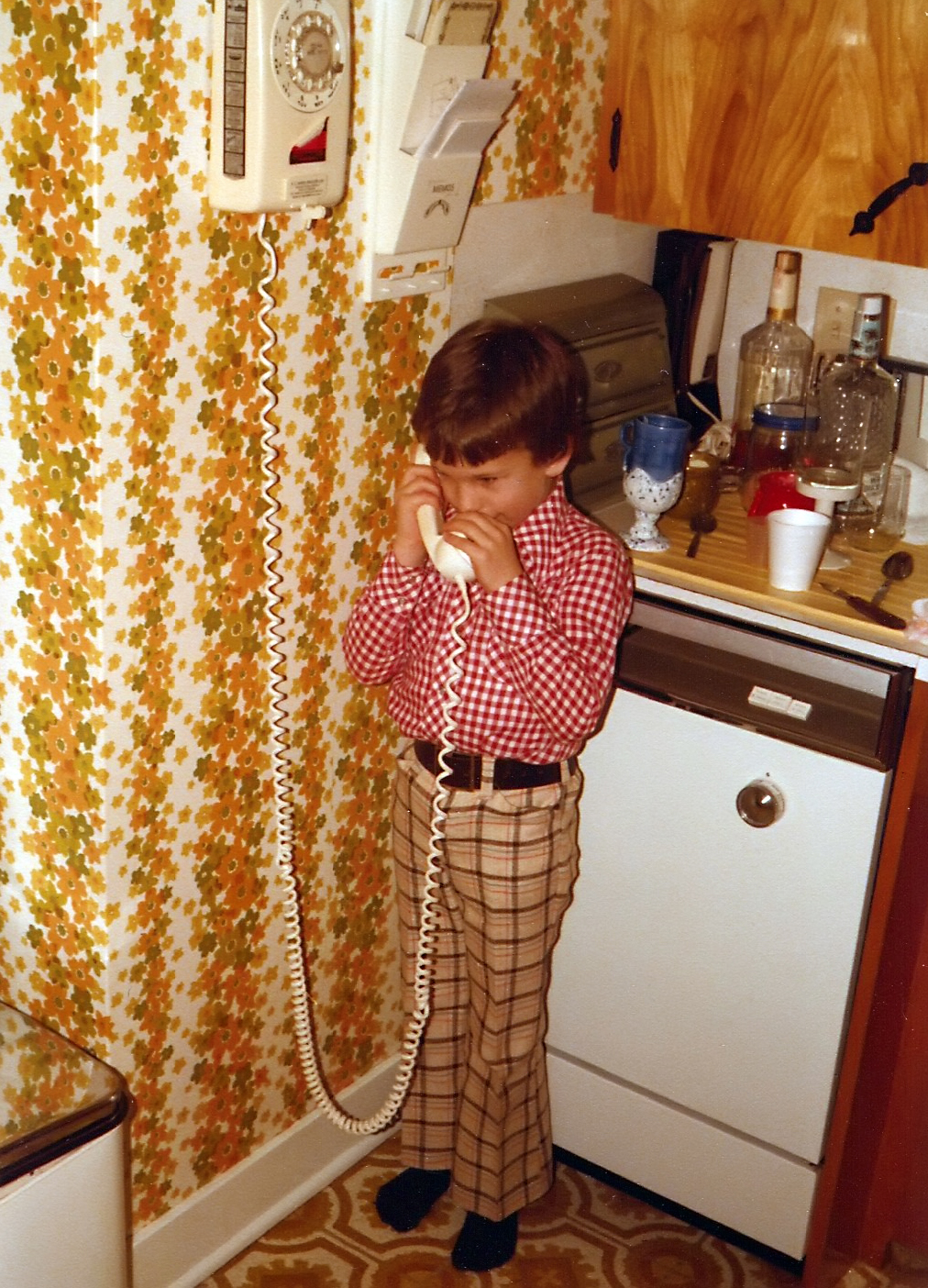Where Is The Efficiency In Only Using One App For Messaging? Spaces, Linkedin, Facebook, and Hangouts Messages. First of all, most of us only use an app when we get pulled in with a notification.
They are all the same in your notification tray.
Advice, resources, and insight on how to make social engagement work to grow your business and career.
Viewing entries in
Tools & Tech
Where Is The Efficiency In Only Using One App For Messaging? Spaces, Linkedin, Facebook, and Hangouts Messages. First of all, most of us only use an app when we get pulled in with a notification.
They are all the same in your notification tray.
What makes social media an essential tool for social enterprise is
If you can master growing and staying in touch with a network of people on Twitter you'll find it a lot easier on the other networks.
If social media monitoring is about communications, measurement is about business strategy.
I don’t expect everyone to jump on this but for those who already know the superior value of Google+, this simple little service makes it easy to make Plus the centre of your sharing activity without causing you to lose the social networks you’ve built elsewhere.
Facebook is now the great social forum where businesses can get to know their communities and build a social reputation. Budgets and expectations should be built around this understanding.
In this e-book my wish is to help you produce more authentic - and beautiful - images of yourself, your staff, your friends, your colleagues. Written to be a quick and accessible read, take these tips with you on your quest to create a better personal online image, avatar or headshot.
 We forget sometimes that ads are content, blogs are content, and social sharing is content. Your competitors have content and it is all public and discoverable.
We forget sometimes that ads are content, blogs are content, and social sharing is content. Your competitors have content and it is all public and discoverable.
What makes it even more interesting is that your competitor’s influencers share content too and you can watch for that as well. You can see who is spreading the word for your competitors and helping THEM grow! That is gold, is it not?
It’s not what you can discover that’s so special (although it really is), it’s what you do with the data that counts. So here are 3 things you can do when you know what your competitor is up to:
1. Watch for your competitor’s top content and dissect what makes it work and what doesn’t. When you’re confident that you have nailed what makes one of their blogs work better than another one you can incorporate the winning approach in your own content (your marketing team should have a ball with this).
2. Pay attention to who your competitor’s influencers are; the people who share your competitor’s content so they can reach their target audience. You can add them to a watch list of potential influencers of your own brand and regularly look for non-poachy ways to start and grow relationships with them. If you learn that one of their influencers is the CEO’s husband, well, you know.
3. Learn what hashtags and communities your competitor’s influencers use to get the word out and spend some time in those online neighbourhoods yourself. Use their tags occasionally and visit the blogs they visit. It’s a great way to get to know what interests your community.
Added bonus: if you know the sentiment (positive, negative) that people feel towards your competitor’s content you can think of ways to get more positive content into the same online communities. Sleeze alert: there is a huge risk of coming across as tacky if you don’t think this through with some respect for your competitor and their fans.

You can do it simply by paying attention and creating a scheduled time to regularly look at your competitor’s content. We actually use a tool called Measurely to run discovery campaigns that give us this and a bunch of other super valuable data for our clients. But if your brand community is still small you should be able to handle this with some regularly scheduled snooping and gathering of info into a spreadsheet.
It’s worth it. Your competitors are sharing content that they hope will interest the same people you are. Why limit the data you gather and learn from to just your own when you can learn from theirs too?
 Bringing one group of friends into a conversation that's happening in a different place on the social web isn't always easy. Sometimes it's awkward and sometimes it's unwanted. But you never can tell where the conversation will strike up and sometimes it makes sense to bring those conversations together. And it always makes sense to bring the best content you have curated into your media hub: your blog.
Bringing one group of friends into a conversation that's happening in a different place on the social web isn't always easy. Sometimes it's awkward and sometimes it's unwanted. But you never can tell where the conversation will strike up and sometimes it makes sense to bring those conversations together. And it always makes sense to bring the best content you have curated into your media hub: your blog.
For a while now Twitter has been allowing tweets to be embedded into web pages with a little bit of code they provide with each tweet. Just look under any post on Twitter.com and you'll see a "more..." link that drops down to expose an "Embed" link. Grabbing the code provided will allow you to embed something like this:
"Either write something worth reading about or do something worth writing about." - Ben Franklin #quote
— Sociallogical™ (@soclogical) November 21, 2011
I could just paste a quote into my post so you can see it and read it, but because I embedded it as a tweet, you can now retweet it, favorite it or do whatever you like to interact with that content on Twitter.
Now Google+ has entered this game, allowing posts on the fastest growing social channel in the world to be embedded into blogs and webpages everywhere, pulling new people into conversations that are already in full swing.
There are a few things that make this even more interesting than Twitter's offer:
Give it a try. In the drop down menu in the top right of your public Google+ posts you'll see the link to "Embed this post". Grab the code and use it the same way as the Twitter embed code.
Embedded Twitter and Google+ posts provide interesting ways to repurpose your social content into your owned media and introduce one segment of your community to another to extend the conversation and bring your brand community more closely together.
What could you embed in your blog that pulls your social media islands closer together?
 Two years ago I signed my team up to participate in a course to teach us how to build a social business. It lit a flame that has been burning ever since. Telling our company’s story using social channels has helped us build community around the world. The course was Sociallogical’s Understanding Social Business and, after completing the course, Sociallogical’s Jeff Roach and I discussed the possibilities of putting together a course about the power and brand empowerment of video storytelling in the new digital landscape.
Two years ago I signed my team up to participate in a course to teach us how to build a social business. It lit a flame that has been burning ever since. Telling our company’s story using social channels has helped us build community around the world. The course was Sociallogical’s Understanding Social Business and, after completing the course, Sociallogical’s Jeff Roach and I discussed the possibilities of putting together a course about the power and brand empowerment of video storytelling in the new digital landscape.
It took a year and a half to accomplish, but here we are! Hemmings House and Sociallogical are very excited to roll out our latest course, “Moving Pictures: Making and Sharing Social Videos”. This is an introductory course that will motivate you to pick up your own camera and begin producing content for your business immediately.
Video is considered one of the most effective communication tools in the social space. Businesses are now building their own production companies within their own walls to keep up with the demand for original and relevant content that supports the brand and the tribe.
My hope is that this course will ignite the same fire in you that the Understanding Social Business course did for my team and I. Once you realize that you have the power and the creative assets to tell your own story (and that your own story is truly epic), then this course will encourage you to get out there and shoot!
 You may think that having a strong profile in all places might be only for the hyperconnected so I have a strong suggestion: pick one and beef it up.
You may think that having a strong profile in all places might be only for the hyperconnected so I have a strong suggestion: pick one and beef it up.
While many of us have accounts on multiple websites, social networks, and our employer's sites, very few people pay attention to the quality of their online presence and the ease with which they can be reached by a client or partner. We have discussed before how your profile is your ticket to getting connected with others online but we never addressed which profile is the most important. I honestly don't think there is a best one for everyone but here is some food for thought:
Really, this is the most important profile for professional people in the western world. Your profile on Linkedin is comprehensive showing me your volunteer activities, who you're connected with that I might be connected with, as well as the richest display of your education and experience. If you don't have a sizable inheritance and need to make a living from your connections to one or more people, you need to be on Linkedin. If you are in a B2B role, you might want to make this your main profile that you give the most attention to.
Put aside your opinions of love or scepticism for Google+ as a social sharing channel and pay attention to this: your Google+ profile feeds your Google search results and Google search is how most people still find pretty much everything online - including connections. It is also the best profile for linking to all of the other places you can be found online and it includes one of my all-time favorite profile features for understanding another person's perspective: where have I lived before. If you want people to find you easily you might want to make Google+ your main profile.
About.me is like an online business card or a central hub for all of your other profiles. It has competitors but it is the most popular profile-only account you can have that doesn't have a social network behind it. It is easy to get, simple to use, attractive, and adapts your profile to a variety of screen sizes well. If you are picking one main profile to focus on, this might not be it, but if you have more than a couple that you give attention to, this might be a good place to bring them all together. I use it for my main URL: jeffroach.ca
The largest, most influential social network on the planet has a lousy profile format that not a lot of people rely on to get to know someone new. Facebook's profile is loose, un-standardized and sloppy and geared more for friends who know each other well than for discovery of someone new. However, Facebook does feature more personal preference type of details that might paint an endearing picture for you if you want to be known more for your interests than your experience. Artists, curators, and culture-lovers can show their favorites of all things well on Facebook and that might be your strength.
With a bio of only 160 characters and only a few other details like location, web link, and not much else, your profile on Twitter is too short and simple to ignore. Beef up your profile on Twitter because it will only take you a few minutes. But don't expect your profile on this channel to satisfy the interests of a connection who is trying to get to know you better. I simply would not recommend using Twitter as your main profile online. Link from it to something more comprehensive.
There are countless third-party profiles you can focus on and beef up and some of them can be very important, especially if they are specific to your industry and widely used by your colleagues. But the ones mentioned above are the big ones, in my opinion.
We don't all have time to be everywhere online and we certainly can't manage to support an endless collection of perspectives on who we are, what we've done, and why others might want to get to know us better - or hire us. But everyone needs one main profile that makes it easy to find out who they are, what they've done, and how to connect with them right now. What is your main profile and are you happy with what others will find there?
It is not a new thing to spend money on marketing based on the number of people who will be exposed to the effort. It is a new thing to know how much money was earned as a result of money spent on a marketing effort.
While media outlets have always been able to tell advertisers the size of their audience through subscription numbers, average viewers and the like, they could never measure the outcomes that really matter to a business - they still can't. And even in the social business era, justifying a marketing effort has continued to be a measurement of buzz, chatter, and the general response created by what was shared. Is that enough?
For most brands, the goal is to make money and grow. So money spent on marketing or any other investment needs to measure how it makes money and moves the business toward its goals or it just doesn't make sense. Does it?
If you can really measure the return on investment (ROI) made in the social space with real business measures then you can start optimizing your efforts based on what has worked or not worked in your past efforts.
Last week our friends at Measurely shared a story we told to the crew at Hemmings House of how we measure the outcomes of our social media efforts using their incredible tools (see video at top of page). To make our story clear, here's what matters to us:
If Kelly shares 30 of our online assets (reshares something we posted, likes us on Facebook etc.) in a month and Bob shares 3, the buzz game tells us we should really get to know Kelly better. But if Measurely shows us that Kelly led to only one signup for our courses and Bob led to 20, business logic tells me Bob is our guy. He's the advocate who is sharing and influencing our brand and buzz alone would have put him low on our priority list.
Get it? Buzz is good. Measured growth is better.
Yes, social business is about people connecting to people, building relationships, getting to know how to help, and adjusting products or services for the people who support the brand.
But people socialize with people, not brands. A brand can't socialize any more than it can eat a sandwich. Brands can't talk and walk so brand content needs to be as focused on the things that will cause growth as possible so the brand community will have something to talk about that is relevant and useful.
Measurely has become an essential partner to help us support our client's growth goals and to help us grow our own business. We are more than happy to be advocates for them. So important has their product becomes to Sociallogical that we even created a central business service around it.
As we have said before, social activity is not busywork, it's business intelligence. With Measurely's insight we can report strategic intelligence to our clients that can make them smart in the social space and act toward growth of their companies. Without Measurely, true social optimization can't happen and we are back to guess work. That's something that was not possible before or since the emergence of social media.
How much time or money would your company spend on an activity whose effect didn't help the business grow? Probably not a lot. But without measuring the bottom line effect of the effort, how would you know?
There is a boardroom scene in American Psycho where protagonist Patrick Bateman, the handsome, wealthy, sociopathic Wall Street banker, trades business cards with colleagues.
His appreciation of card stock, lettering and typeface is practically erotic. And the status envy induced by a co-worker’s superior card design is borderline psychotic.
“Oh my god, he even has a watermark,” Bateman gushes.
Bret Easton Ellis’s harrowing novel was published in 1991, but the card lust it describes already seems quaint.
I recently ran out of business cards and hesitate to order more. I only feel the absence when someone gives me theirs – it is simply good manners to reciprocate. Beyond etiquette, though, what are they FOR, anymore?
In the pre-digital days, it made sense to amass fat files of clients and leads. Gathering contact information back then was cumbersome. Now, though, a business card is clutter I am more likely to lose or spill coffee on than actually USE.
Here’s the thing: when someone gives me their card it is almost always in person, which means I have already met them. The connection is made. I likely have their contact information. And if not, if they are even remotely on their social-media game, they will be easy to find.
I’m not the only one questioning the card. As Matt Stevens noted in his 2012 Los Angeles Times piece ‘Passing out business cards is quickly becoming passé,’ the former business staple is becoming an anachronism. Today, Stevens writes, many people find them “irrelevant, wasteful - and just plain lame.”
As comedian Mitch Hedberg puts it:
“I got a business card ‘cause I want to win some lunches. That’s what my business card says, ‘Mitch Hedberg: Potential lunch winner.’ Give me a call, maybe we’ll have lunch? If I’m lucky.”
Hedberg’s joking, but he gets at something about business cards today - acting on them is unlikely. It would be lucky indeed, if they got you a call. You want to create a card that compels action.
Better yet, don’t give them out, get them. Don’t wait for the other guy or gal to get in touch; make collecting cards your goal and put the onus to act in your own hands.
If you aren’t ready to shred your paper cards, there are ways to optimize their social media potential, which means more friends and follows, more ways to share your story with potential customers and develop the sort of relationship that will mean, in the end, more business.
That little piece of paper should be pulling in tandem with your online presence and social media strategy.
That means your Twitter handle, Facebook name, or blog site. And use social media icons on the card, for visual impact.
Personalize a Quick Response code with your deets. Scanned by a smartphone, it can automatically send text, photos, videos, music and URLs. Create a digital business card that can be beamed up.
Profile pictures aren’t just for online. Add a photo to your business card to make the connection between you and what you do even stronger. Some designers have even formatted paper business cards to look like social media sites, creating a nice visual bridge between the physical and virtual.
Pinterest and Instagram are popular because they are beautiful and interesting to look at. Use eye candy.
Design a business card for a particular event or promotion to drive traffic to your social media streams.
If you are a true trailblazer, save a tree and create a digital card that can be sent as an attachment or traded by apps such as Bump or LinkedIn.
Are you one of the brave pioneers who have gone cardless? How have you made business cards work for you in this digital age? Are paper cards destined to become nothing more than pocket spam, their mother-ship the Rolodex headed for the scrap heap of office history? Or do the little cards have a place in the future of networking?
If you have some feedback, let’s do lunch.
 With such rapid change and extreme disruption to business caused by social media in recent years, many wonder where this is all headed. How about if we start with where we are now?
With such rapid change and extreme disruption to business caused by social media in recent years, many wonder where this is all headed. How about if we start with where we are now?
This Fall the Interactive Advertising Bureau (IAB) released a comprehensive paper on the state of the social media ecosystem which, for those who need to deeply understand something before investing in it, is very insightful and appears very accurate. As expected, it's not an entertaining piece, but it's worth a read over the weekend and for holding on for future reference.
You can grab the report titled The Social Media Ecosystem Report - Rise of Users, Intelligence and Operating Systems. Below are a few excerpts that jumped out for me as valuable, sometimes surprising, and sometimes validating of my suspicions.
What do you think? Does this information confirm or will it change any of your business plans?
"You as a brand have to be completely confident about your position, because you will get criticism. You will have a negative reaction. If you didn’t get a negative reaction, that means you’re standing neutral and you have no point of view. Who wants to participate in that?” ‐ Frank Cooper, CMO Global Consumer Engagement, PepsiCo
“Facebook and Twitter have become online gate keepers to all things social”
"Gameification is the most common tool for glossing over the lack of a value proposition (i.e., when tools and apps offer little or no true functionality) – it appeals to users’ desire to acquire and amass things (real or fake) that show status."
"The social ecosystem is anchored by platforms (e.g., Facebook, Twitter, LinkedIn, Path) that focus on users’ relationships (i.e., the “social graph”) and offer broad utility and interaction..., interest based platforms (e.g., Fancy, Spotify, Pinterest) offer broad functionality but are vertically focused, engaging the user’s “interest graph”."
"LinkedIn has been building off its “professional graph” to create an “economic graph”, wherein professional identities – on a global basis – are available, making it easier for both human resources and capital to flow to where they can best be leveraged."
"Social media services have begun to significantly transform the way businesses interact with each other, both internally, on an enterprise level, and externally, with customers."
"Apart from CRM, enterprises are also using social media for internal non‐customer facing initiatives, such as talent management and resource optimization."
"A new breed of Social Intelligence companies – technology driven agencies – will be charged with generating actionable insight and defining social ROI."
"A brand’s social strategy starts with identifying its entire audience on and off channel, segmenting the audience into different types of users, and developing an engagement strategy for each type."
"Success is uniquely defined by each company and its own campaign approach or goals. The ultimate goal is to amplify the earned media to shift or decrease the total media cost for brands."
"There is no silver bullet in social media marketing, and success must be uniquely defined."
"Social media has introduced a new form of communication between consumers and brands that allows for an around‐the‐clock, real‐time marketing and interactive customer experience. Consumer adoption of social will continue to proliferate as companies offer high value and relevant engagement opportunities."
 Online social media can draw people to your brand community and help return humanity to the world of business but it will never get rid of one-on-one voice conversations.
Online social media can draw people to your brand community and help return humanity to the world of business but it will never get rid of one-on-one voice conversations.
On one end of the bell curve are those who wish all human interaction could be kept to text and under their personal control. They see phone calls and postal mail as 'so last century', so they shun it as much from a sense of personal style as from a need to feel productive.
On the other end are those who are offended by the new social media and the distance it seems to breed between people. Completely misunderstanding what social media is and how it accomplishes just the opposite, they fear it will erode society through disconnection and lack of community.
Somewhere in the middle are those who are learning to use all tools for what they do best. And in this spectrum will always be a very important role for voice conversations that we've always known as 'phone calls'.
One-on-one conversations are disruptive. It's hard to do much else when you're having a conversation with someone else so multitasking must stop while you focus on the other person. This drives some people crazy.
One-on-one conversations are so important because they communicate importance. If your goal is to communicate how valuable another person is to you, dropping what you are doing and giving them your attention is a great way to do this.
[Infographic] Socially Awkward? How Online Relationships Affect Real-World Relationships sologi.co/fk4ph #learnsocial
— Sociallogical™ (@soclogical) November 15, 2012
Our family is currently expecting a baby and, as of today, we are 11 days overdue. Many people we love want to know what's going on and want to hear from us as soon as there is news. Most will find out when we post news online but my Mom wants a phone call.
To call my Mom and let her know what is happening with our baby's birth I need to set aside a few minutes to do nothing else but talk to her, just like in the olden days. But doesn't she deserve this? Shouldn't people in our lives like our mothers receive this top-level treatment in which we drop what we are doing and make them our priority for a few minutes now and then?
The same efforts that keep you close to your Mom can also keep you close to your clients.
We value various types of communication partly based on the investment required for the communicator to share it. We are so deeply offended by businesses who automate their communication too much because we feel we deserve more. We are giving them our money, after all. We also still cherish handwritten or signed letters or even requests for a video conversation because we appreciate the cost in time and effort involved for the other person to share with us in these ways.
I'm obviously not against all forms of automated communication and I am certainly not against one-to-many social media sharing. But it's important to recognize what each type of communication costs us and what we can expect from the relationships we feed with it.
Online social media keeps people connected to us and our brands. It keeps us on their minds, adds value if we are sharing helpful content, and allows us to keep personal connections alive the same way our grandfathers used to tip their hats and share a kind word with their neighbours (and their customers) on the street. But social media only enables a personal connection if we personally invest in it.
The technology will change but 'phone calls' or one-on-one voice and video conversations will never come to an end for any business that wishes to bring people close and to build community around their brands. A business can't chat with every customer. But every conversation they do have is an investment in relationships that should matter to a business.
Call your customers now and then, just to say "hi" or offer some friendly advice. Be cautious not to waste the other person's time, but if you know your contact is wanted or even requested your interest in wanting them to stay close to you will be understood better than with an email or a social network post. And that investment is worth so much more to the success of your business than extreme efficiency in how we communicate.
Do you shun the phone or embrace it as a powerful relationship building tool for your business?
The photo above is of me talking to Santa Claus on the phone, Christmas Eve 1978 - obviously proud that Santa would take a minute of his time to call me on his big night!
Yesterday afternoon 8 friends and clients of Sociallogical jumped on a free, high quality, responsive and easy to use video conference that was fun and shocked the heck out of more than a few of us. After our brief conversation, the whole thing was automatically uploaded to YouTube in HD quality where it can forever be watched and shared, hopefully for the benefit of others who want to give it a try.
This great experience was courtesy of Google+ and its Hangout feature and was simply a 23 minute chat for friends and clients who expressed interest in trying it out to do just that. We planned it last week, called it a Sociallogical Google+ Hangout Intro intended to last 5-15 minutes, and we broadcast it "On Air", which meant that anyone in the world could watch our discussion live as it was happening - and now anyone can watch the recording of it forever.
Want to try this? Learn How To Get Ready For Your First Google+ Hangout
I don't plan to blog about every +Hangout we host or take part in. But watching people experience the power and simplicity of this new medium for the first time is a pleasure and I urge you to watch a bit of it (below at the end of this post) if you have never seen it before. I actually started recording it early because I didn't want to miss the surprise and pleasure on people's faces. A couple of people had trouble using their microphones or webcams for the first time, but that's expected. They won't have that problem next time.
Just think of how powerful this tool can be to reach an audience and build a brand community:
Idea 1: Discuss new trends with leaders of your industry Idea 2: Instruct your clients on something they're interested in learning Idea 3: Give demos of your product to clients, potential clients or partners
There are lots of ideas that you can come up with to help your business by using it to build community around your brand. Think about it and let me know what they are in the comments below. We love learning new ways to be social.
And let us know if you'd like to join us on another "first-timers" Hangout sometime soon because it really was a good time.
Special thanks to Garth Frizell from Prince George, BC who was our experienced guide on this brief tour. And I'm so happy that Kelly Lawson, David Hayward, Greg Hemmings, Judith Mackin, Sarah Tapley and Chris Boudreau were all able to join us.
Google+ Hangouts are an engaging social media channel that
Because we host Google+ Hangouts regularly, we have prepared this simple outline for getting ready if you have never joined a Hangout before. If you're already using Google+, skip to step 3...
Most of us already have one of these, but if you don't have a gmail.com account or an email account that uses Google Apps (gmail for your business), you'll need to get one. Since Google+ is the only social media channel that requires you to have a specific kind of email account, this is a necessary step if you want to get the most out of the Google suite of services (Youtube, maps, gmail, etc.)
I have a gmail.com account that I forward my other personal and work-related email accounts to so I only have one inbox and it is tied to the other great services I use each day.
Even if you're already using Gmail, you still need to say yes to sharing across Google's services by setting up your Google+ account.
On a computer:
On a mobile device:
If you're getting ready for your first +Hangout that someone else is inviting you to, you'll receive an invitation in your Notifications section (a little box that lights up red in the top right of your Gmail or Google+ page - or any Google service page, for that matter - when there are any messages). The invitation to +Hangout will be there and all you have to do is click the link to join! And if you don't see it there, visit the Google+ profile page of the host and the invite should be one of their more recent posts.
that lights up red in the top right of your Gmail or Google+ page - or any Google service page, for that matter - when there are any messages). The invitation to +Hangout will be there and all you have to do is click the link to join! And if you don't see it there, visit the Google+ profile page of the host and the invite should be one of their more recent posts.
Use a headset with a microphone. I just use the headset that came with the iPhone I bought several years ago and it works like a charm. Most laptops, tablets and other devices made in recent years have built-in webcams but even those will often pick up a lot of the sounds around you and not just your voice. A personal microphone on a headset is much better at just picking up your voice, making the experience better for everyone.
Every Thursday morning at 10am EST Sociallogical hosts a FTH (First Time Hangout) for anyone who wants to try one out for the first time or just practice with a new change to your video or audio setup.
No pressure. No agenda. Just practice.
You'll need to add the host, Sociallogical, to your Google+ circles to see the invite. You'll see an invitation to the next FTH in our recent Google+ posts so you can say Yes and get notified of the next one.
Do you have any questions that we don't answer here? Let us know in the comments below.
As Seth Godin would say, this is broken.
The 2012 Games could have tested the power of sponsored stories, social media advertising and online community engagement on behalf of high paying sponsors. But, instead, Olympic organizers hid behind copyright protection and old technologies - including social channels - to broadcast them instead of share them with the generous spirit of, well, the Olympics!
I agreed with a friend tonight that I am only now mildly regretting that we have been a cable TV-free home for many years now. Except part of me is happy to be boycotting these Games for not making every minute and every bit of content freely available across the web. I could take a video of my left foot this evening and potentially share it with more people on more channels than anything happening at the London Olympics this week.
+1 RT
@jeffroach:#london2012 best example to date of what is wrong w/copyright laws. What a clumsy, sad content "strategy".#thisisbroken— Burke Allen (@novologic) July 28, 2012
The International Olympic Committee needs to hear a clear message that this has to be the last "television network" Olympics. They'll hear it if enough of us consume non-Olympic content on the web over the next two weeks, share best wishes and support directly to our favourite athletes who are available online, and hope that the IOC wakes up and changes direction before Russia 2014 and what could be a turning point for the modern Games if they don't tear down this iron curtain.
If you could, would you prefer to consume the Olympics through the web where you can choose your experience and how you'd like to share it with others?
If such a massive, wealthy machine as the Olympics can misunderstand and fail so badly with social media, does this comfort or frighten you when you consider the opportunities for your business in becoming social?
People don’t socialize with brands, they socialize with people. So even if you have a brand account for your business, finding a way to feature your people through it is essential. Here are a few questions to ask yourself when sorting through this issue.
 The simple observation is that Google+ is trying to be Facebook and won't make it because it doesn't have the same critical mass of mainstream users. I say "yet". Comparing Google+ to Facebook is like comparing the dashboard of a BMW to an entire Mercedes Benz. The right comparison, if there is one, is to compare Google with Facebook.
The simple observation is that Google+ is trying to be Facebook and won't make it because it doesn't have the same critical mass of mainstream users. I say "yet". Comparing Google+ to Facebook is like comparing the dashboard of a BMW to an entire Mercedes Benz. The right comparison, if there is one, is to compare Google with Facebook.
Yesterday I read yet another commentary on the demise of Google+ by a myopic marketer using a tool that is less than a year old and couldn't resist a rebuttal. In this age of rapid innovation and transient clientele, it is not wise to dismiss any new connecting tool in the social space, especially one created by the world's greatest conduit to data, knowledge, and online culture.
Comparisons between Google+ and Facebook only account for the time that people spend looking at each of their stream-like social interfaces. In the same way that you might send messages, sign up for an event, or link to an article or video from Facebook, Google's offering needs to be similarly regarded.
Google+ is the sharing backbone of Google - all of Google - every service they have in their formidable collection of useful services. I'm confident that Facebook isn't nearly as dismissive of the challenge Google presents as some of the pundits are.
As Facebook launches its new career as a public company today, more than a few analysts recently have acknowledged that the Facebook product IS the people who use it. Without the content that we, the users, share into our news feed (sorry, "Timeline"), there is no Facebook and the network's success depends on it continuing to be the place where the critical mass visits and shares regularly. As soon as it loses our interest, even a little, the house of cards is likely to fall.
The argument that Google+ is less potent because less people use it than Facebook is valid - from a Facebook point of view. The reason we use Facebook is because a critical mass of the people we know are there. That's why I use and enjoy it every day.
In contrast, Google+ continues to grow at an astonishing rate despite not possessing that critical mass of people we know. Millions of people have found Google+ useful for reasons other than the one reason we all use Facebook. Imagine what will happen if and when it does reach a tipping point and your parents and kids start sharing their lives with you by hitting the +1 continuously across the entire web.
That observation is why I continue to recommend this new network, still in its infancy, to my clients and friends.
Top: A pic of the Ford Edsel, often the symbol of commercial failure. That won't be Google's fate any time soon.
Note: Yes, I changed the title of this post. I thought it was too harsh. Reading another commentary taking a a surface view of the matter got the best of me.